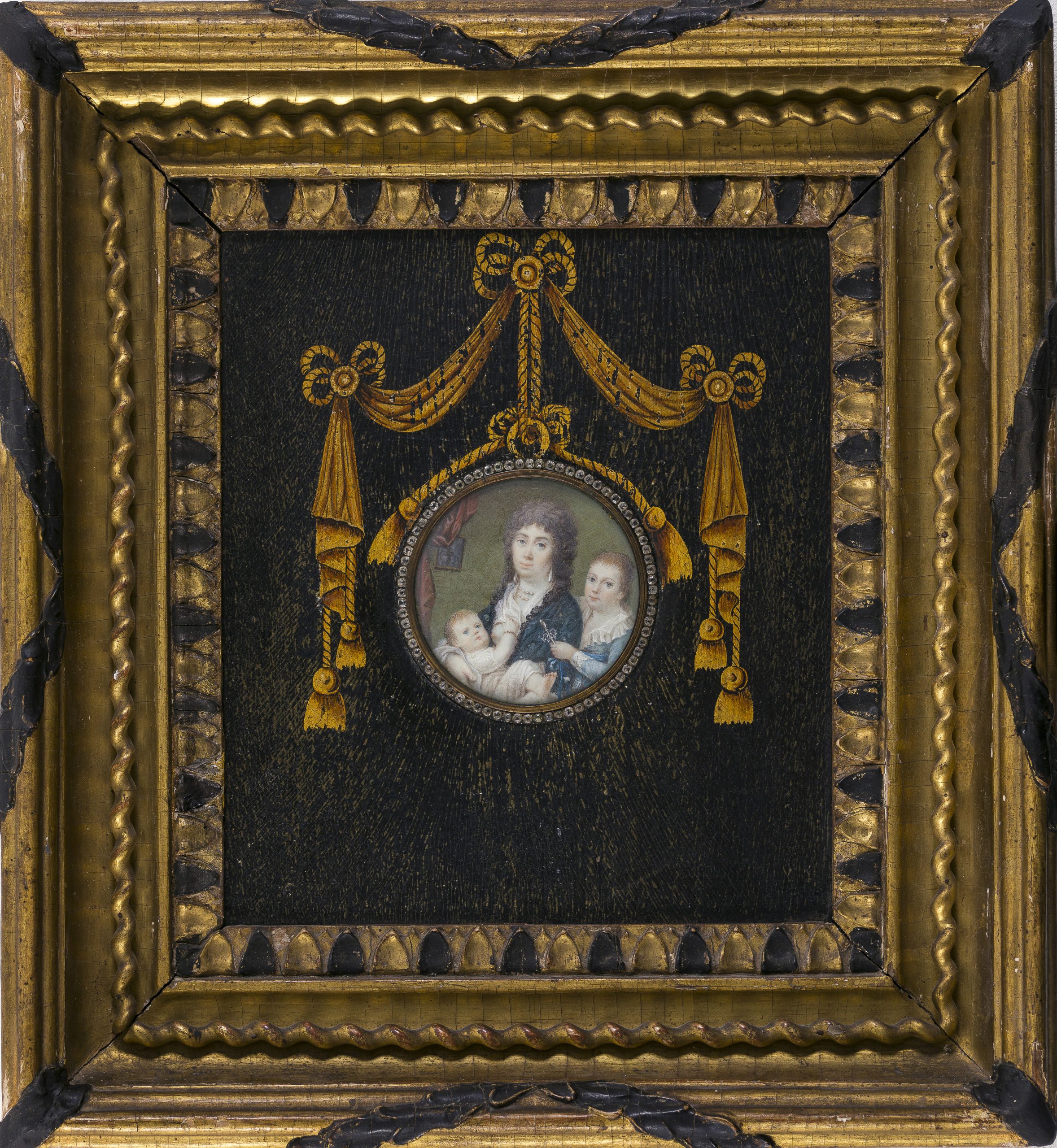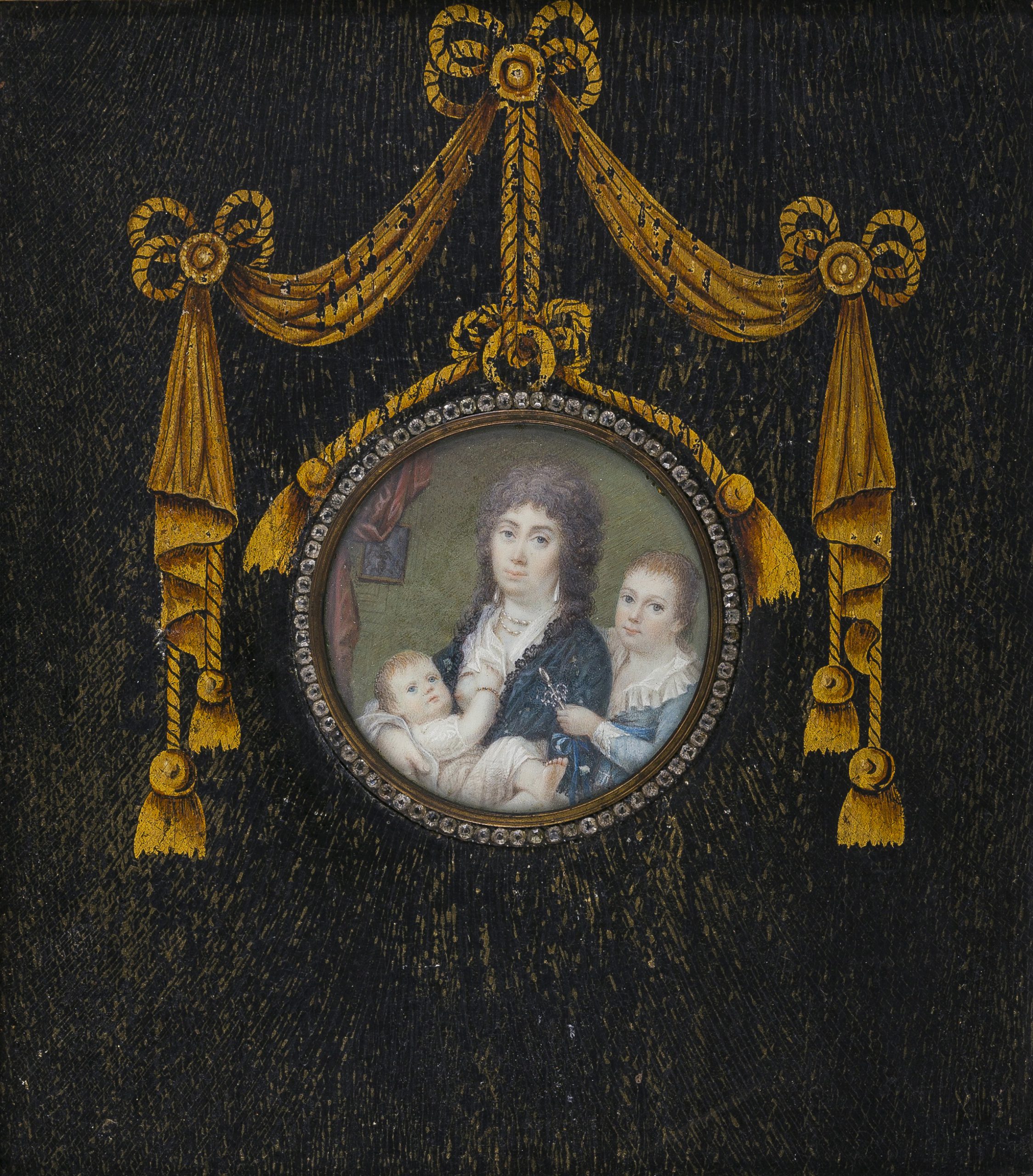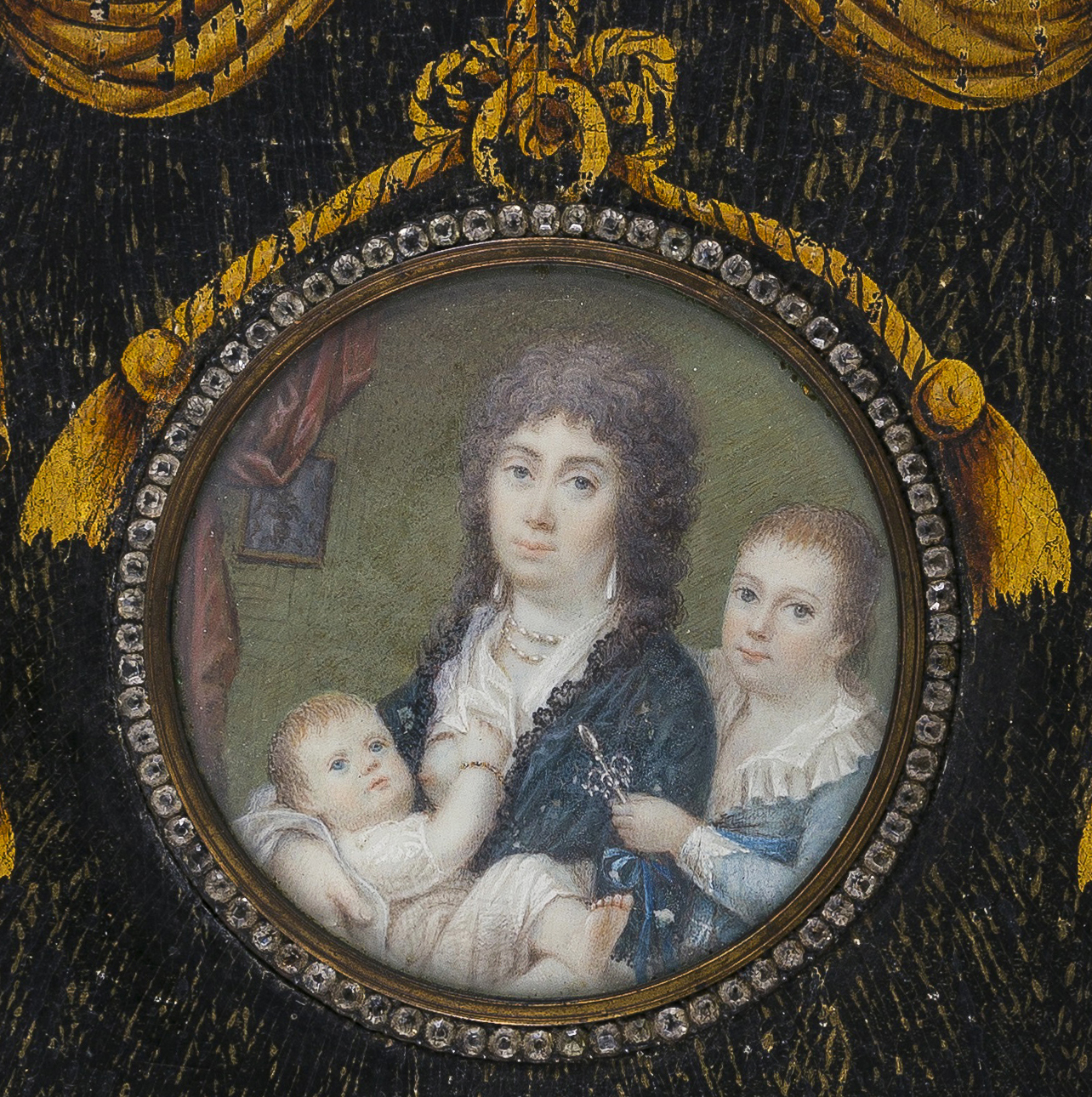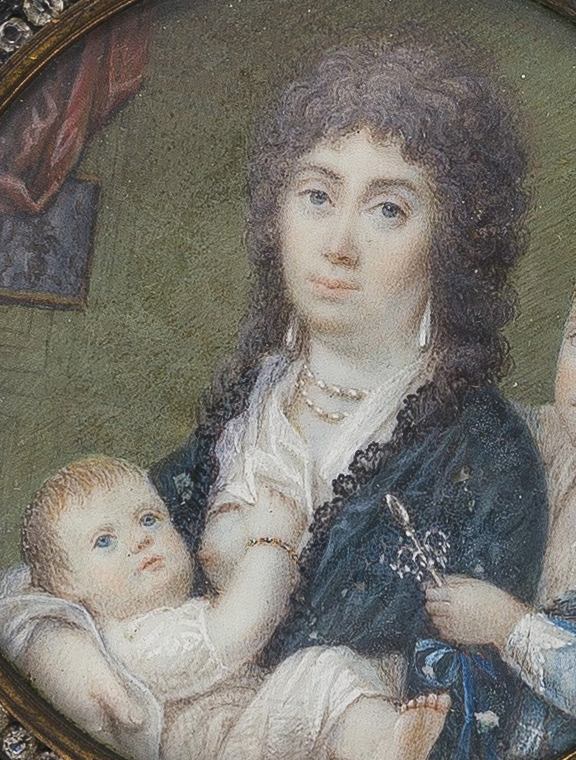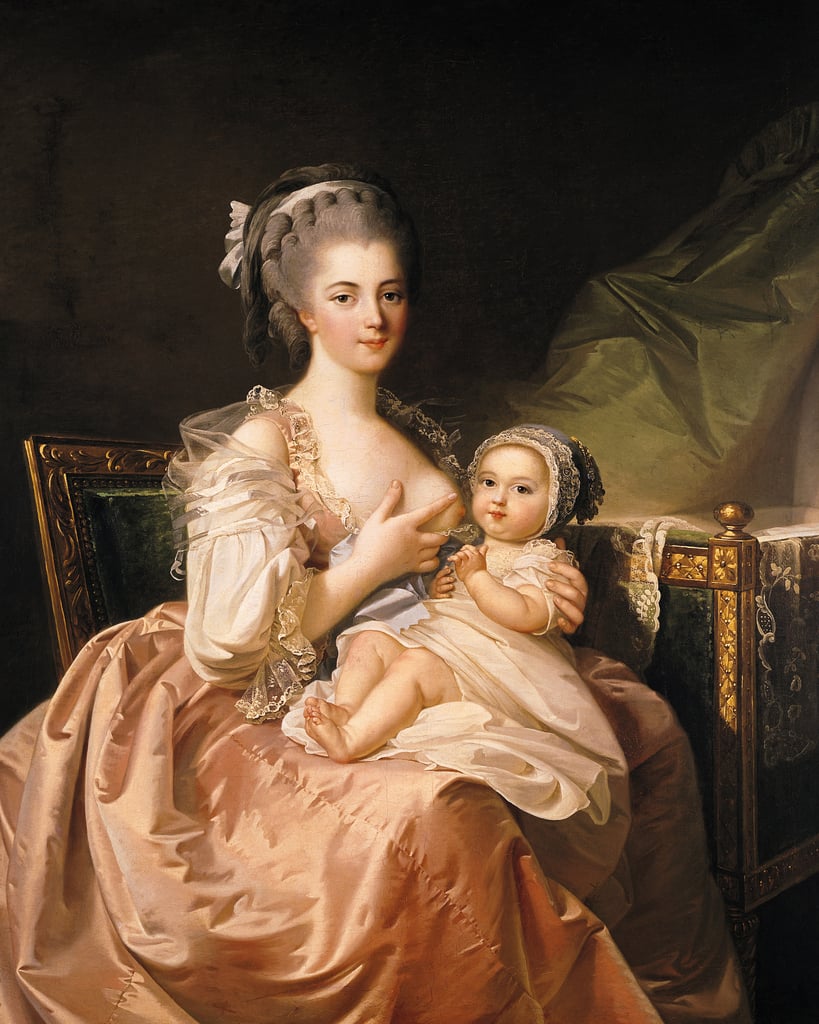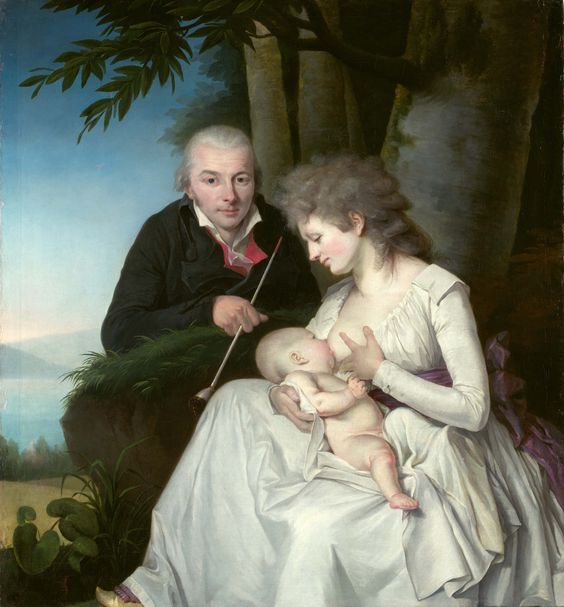FRENCH SCHOOL, circa 1790
French School, circa 1790
Portrait Miniature of a Lady with Two of Her Children
Watercolour and bodycolour on vellum, diameter 7.6 cm, in the original giltwood frame, 33 x 30.5 cm
Provenance
Private collection, France
***
“The way [children] are brought up now, they are less hampered; they are not swaddled, they are always in a crib or held in the nurse's arms, and as soon as they can be outdoors they are accustomed to it little by little until they are almost always out. I think this is the best and healthiest way to raise them.”1 When Queen Marie Antoinette of France wrote these words to her mother Maria Theresa in 1778, she was still only a few months pregnant with her first--and long awaited--child. But she, like so many mothers, was already thinking ahead about the best way to raise a healthy, happy child. Antoinette's words in this letter were a clear reflection of the growing trend towards what was considered a more natural and healthy way of raising children.2
This trend included foregoing the once-traditional practice of swaddling in favour of allowing free movement, exposing young children to the outdoors instead of secluding them inside and, whenever feasible, employing mothers to breast-feed their own children instead of sending them to wet nurses. Marie Antoinette was a notable supporter of the movement towards motherhood breast-feeding. According to Antonia Fraser, Marie Antoinette attempted to breast-feed her first child, Marie Thérèse, for nearly eighteen days before ceasing, perhaps on the directive of her physicians or her husband. This type of arrangement would naturally encourage the development of feelings and strong attachment between the infant and their nurse. Philosophers of the period, notably Jean-Jacques Rousseau, were staunch supporter of mothers breast-feeding their children.
Despite the growing popularity of the custom, its depiction in the visual arts is fairly rare. The painting Young Mother of 1782 by Jean-Laurent Mosnier (c.1743/44–1808) is preserved in the Musée Municipal des Ursulines, Mâcon, France (fig.),3 while another celebrated example is the Family with a Mother Breast-feeding of circa 1795-1800 by Johann Friedrich August Tischbein (1750–1812), preserved in Kassel (fig.).4
Although the identity of the intimate family depicted in this charming miniature are lost to time, they are likely to have been members of France’s cultural elite, aware of the latest developments in philosophy. The miniature is contained in an exceptional original framing arrangement, consisting of a panel with painted swags and garlands, visually suspended from bow ribbons, according to the Louis XVI taste, while the outer gilded frame is partially picked out in black.
SOLD
1. Olivier Bernier, Secrets of Marie Antoinette, New York 1985, p. 255.
2. For the subject, see Gal Ventura, Maternal breast-feeding and its substitutes in nineteenth-century French Art, Leiden/Boston 2018.
3. Oil on canvas, 133 x 107 cm, see Ventura, op. cit., p. 31, fig. 8.
4. Oil on canvas, 130 x 120 cm, Museumslandschaft Hessen Kassel, Gemäldegalerie Alte Meister (loan Städtischer Kunstbesitz); J. Beltman and P. Knolle (eds.), Johann Friedrich August Tischbein en de ontdekking van het gevoel, exh. cat. Enschede (Rijksmuseum Twenthe) 2019 – 20, p. 54, fig. 30.
